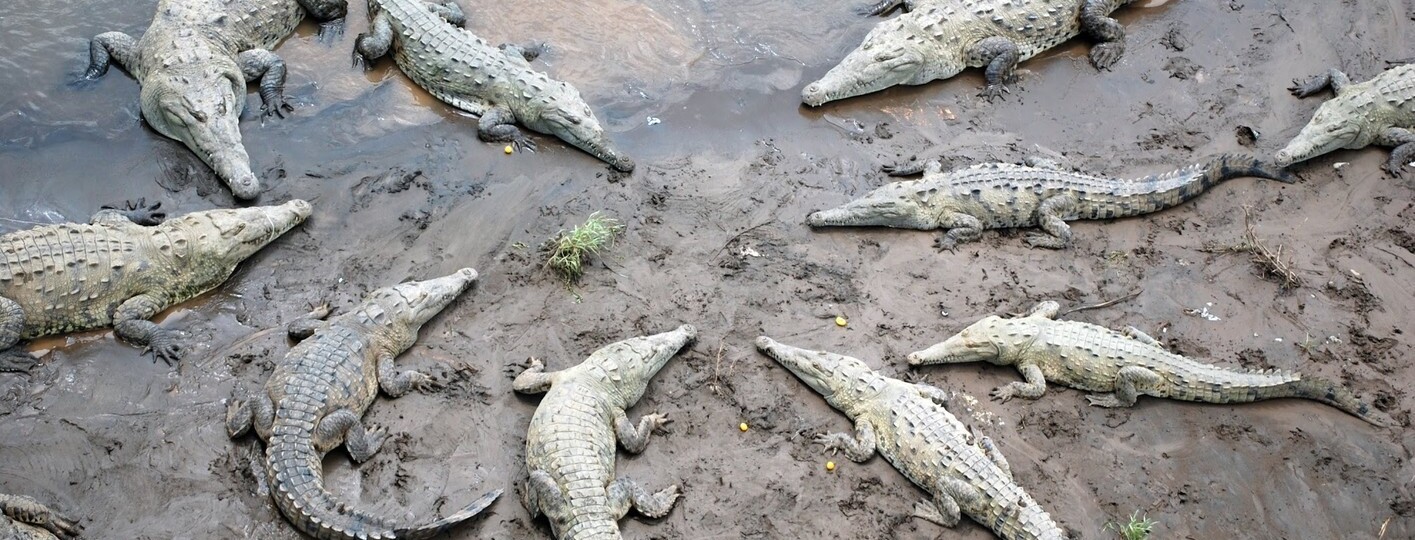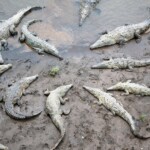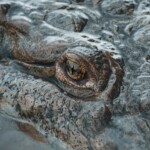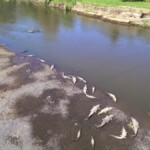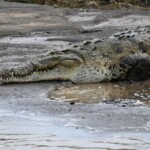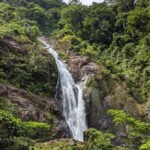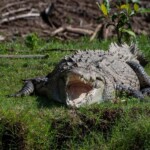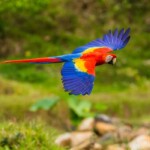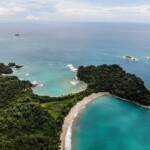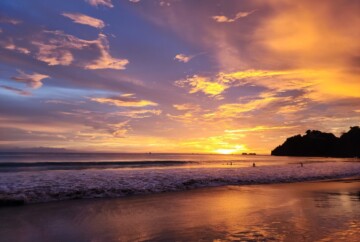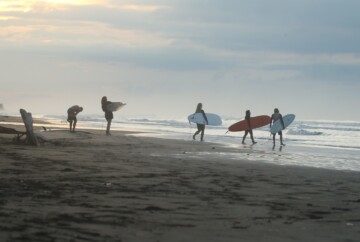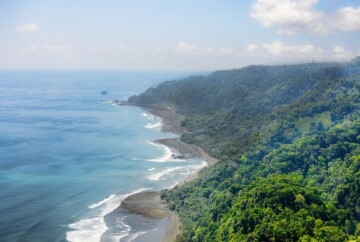Although we saw numerous signs warning us about the presence of crocodiles in Costa Rica, we had never had the opportunity to see these animals in the wild. That’s why, on the way to Manuel Antonio National Park, it seemed like a good idea to stop at the Crocodile Bridge over the Tárcoles River.
In case you didn’t know, you can observe one of the most fascinating species of animals in Costa Rica in the wild and… very close! The Tárcoles River has more crocs than Tortuguero and Carara, two other national parks in Costa Rica that are famous for their crocodiles.
At the Tarcoles Bridge in Costa Rica, you can see a dozen specimens of American crocodiles from above, either resting on the shore or popping their eyes above the water’s surface.
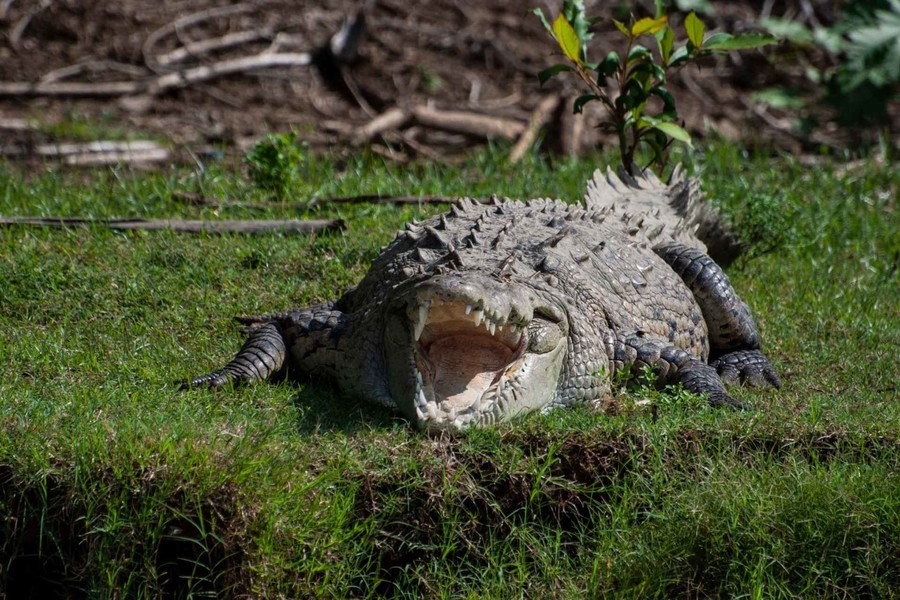
Tarcoles River & Crocodile Bridge in Costa Rica
It seemed like one of the best things to do in Costa Rica, but it left us with mixed feelings. Seeing the crocodiles in Costa Rica was spectacular, but one is left wondering if these animals stay there naturally, or if they receive food to be attracted, and thus also attract tourists. Nearby, you can see some craft stalls and local restaurants, and boat rides on the river are offered so you can see them up close (yes, even closer). We considered this boat tour, which starts from around the bridge and allows you to go into the jungle as you sail, but we decided against it and just observed them from the bridge.
We hear there are plans to build a visitor center and viewing platform, so we hope this will improve the situation for these crocodiles in Costa Rica. The truth is that the Tárcoles River Bridge has become super popular since it is free and safe. There is even a tour from San José that takes you here in case you decide not to rent a car in Costa Rica.
Below, you will find all the information you need to plan your visit to the Tarcoles River Bridge, such as its location, what to expect, and what to do in the surrounding area.
Where is the Tárcoles River Crocodile Bridge in Costa Rica?
The Tárcoles River Bridge is located on National Highway 34. This route connects San José, one of the most important cities in Costa Rica and the country’s capital, with the Pacific coast, where you will find some of the main tourist sites such as Quepos or Manuel Antonio.
To give you an idea, if you’re enjoying the waves on the beaches of Jacó, you can get here in just 30 minutes by car. On the other hand, if you’re staying in one of the hotels in San José, it will take you about an hour and a half.
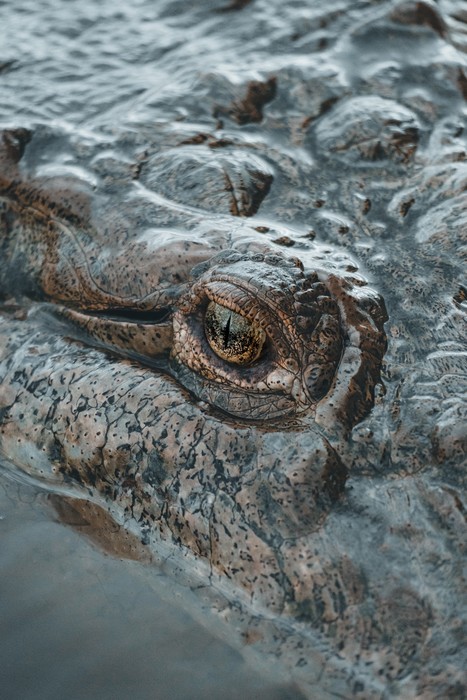
Where is the Crocodile Bridge of the Tárcoles River, Costa Rica
The road crosses the Tárcoles River Bridge, so there is no parking in the area. Of course, most visitors leave their cars on the side of the road, on a large dirt esplanade near the craft stalls. While there are various places along the road that charge for parking, you can drive up to the esplanade and park for free.
To find the exact location of the Tárcoles River Bridge, you can click here.
Views from the Tárcoles River crocodile bridge
Once you park your car, head to the right side of the bridge, which faces west toward the Pacific coast and Manuel Antonio. You’ll see a sign warning visitors not to swim in the waters. We laughed out loud when we saw this, but then we heard some stories about distracted bathers, so we understood why the sign was there.
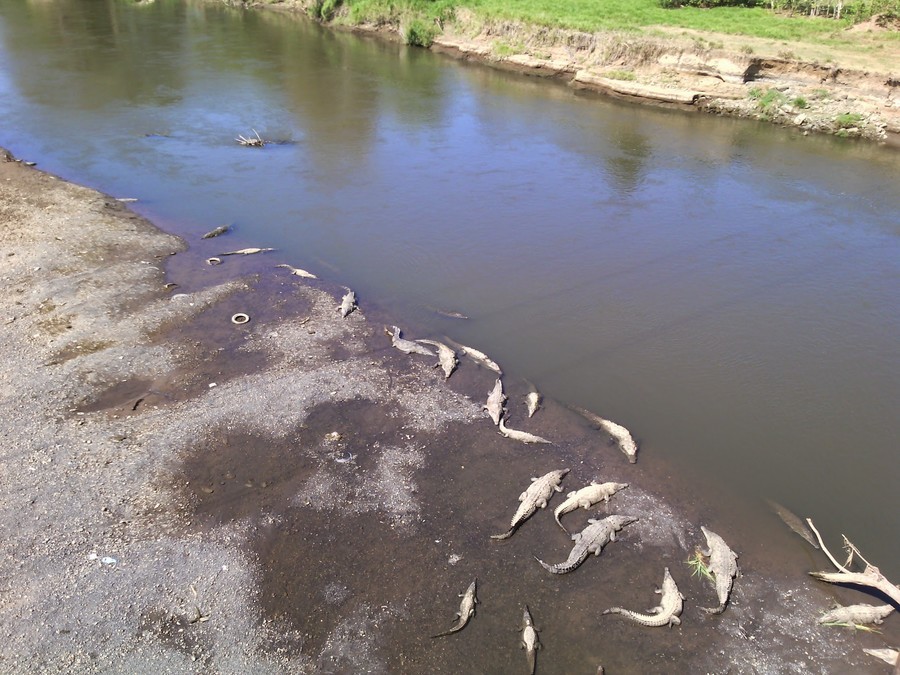
Views from the crocodile bridge of the Tárcoles River
The pollution of the Tárcoles River can be seen with the naked eye. The crocodiles camouflage themselves and disappear in the water, which is brown from the mud and waste that comes from the city of San José and the industries in the area. This stood out to us since generally, Costa Rica is a country that prioritizes the conservation of various species. The curious thing is that despite being the most polluted river in Central America, the Tárcoles River in Costa Rica houses such biodiversity.
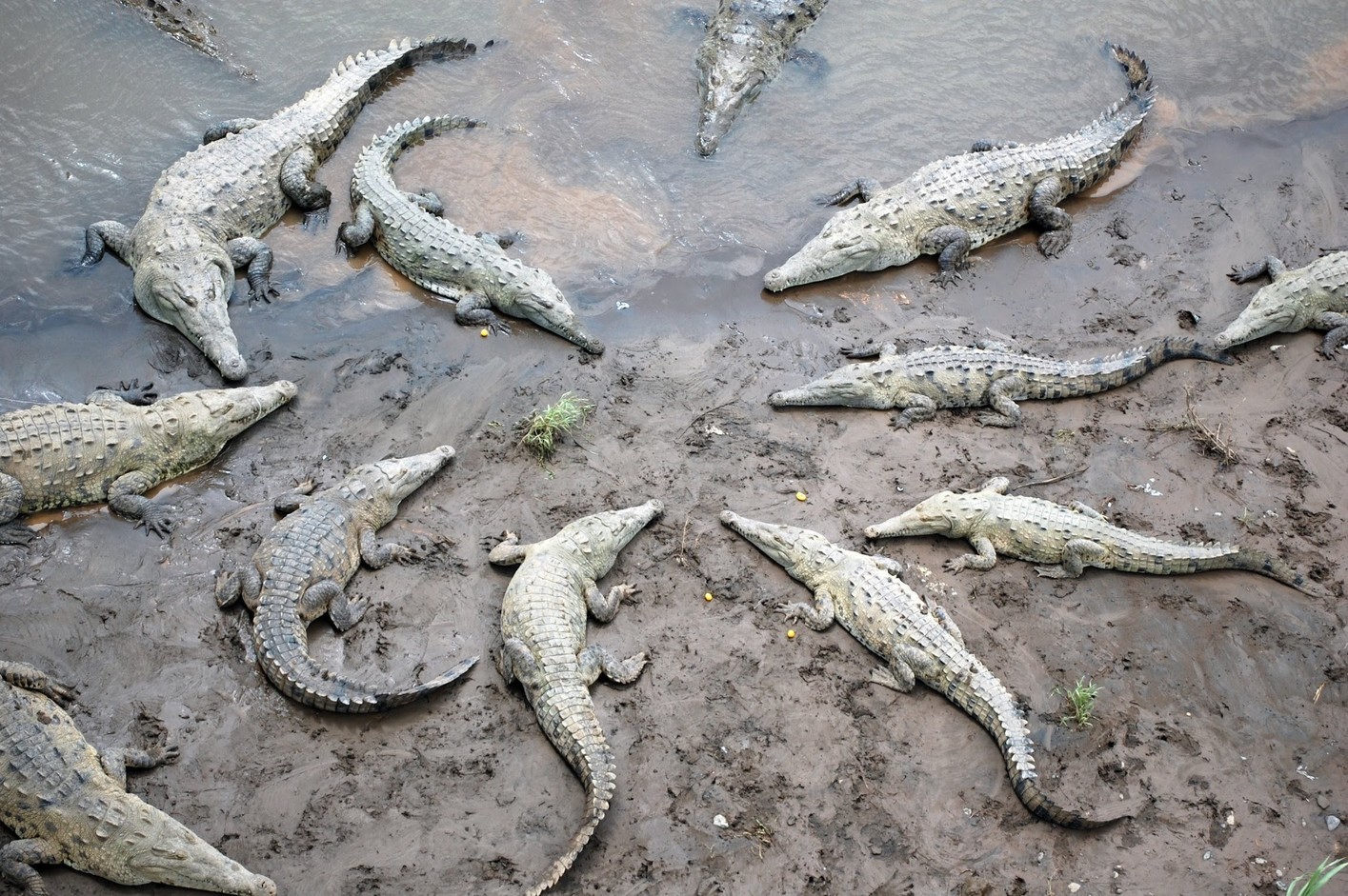
Seeing the Tárcoles River crocodiles is impressive
The experience of seeing the Tárcoles River crocodiles is impressive. You can see them almost everywhere, both on the sandbanks and in the water. I was amazed watching their slow and precise movements, and seeing many others in an immobile position until a tourist threw some food, and they suddenly jumped up to snatch it. Of course, throwing food is completely prohibited, but some visitors didn’t seem to care.
Information about Costa Rica crocodiles
The Tárcoles River crocodiles are American crocodiles, the largest in the world. They measure between 3-4 meters (9.8-13.1 ft) and can weigh up to 500 kilos (1,000 lbs)! This species can reach a spectacular size on its own, but the crocodiles here can get to about 7 meters (22 ft), thanks to the excess food they receive each day with little effort.
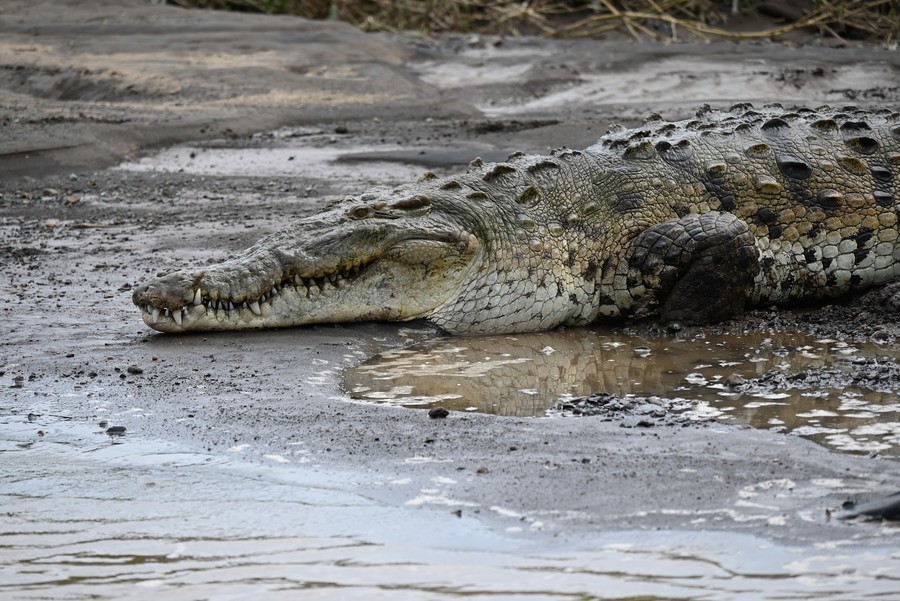
Information about Costa Rica crocodiles
Watching these Tarcoles River crocodiles, I was fascinated by their textured skin and sharp teeth, which show even when their mouths are closed.
Other places to see crocodiles in Costa Rica
If you want to see crocodiles in Costa Rica but prefer a place with greater ecological awareness, you can go to Tortuguero National Park. In addition to witnessing turtles nesting on its beaches, you can sign up for a canoe tour through the channels of this protected area.
This 2-hour excursion will allow you to observe different species of animals in Costa Rica, such as the famous howler monkeys, anteaters, blue herons (among other birds), fish, and, of course, some alligators and crocodiles drying in the sun by the river.

Other places to see crocodiles in Costa Rica
Sightings are quite frequent since they live in the mouths of rivers and canals in the sea. They usually find a large amount of food here, so they concentrate on the shores in search of their prey.
If you want to know more about this national park, you can consult our guide to Tortuguero National Park.
Other places to visit near the Tárcoles River
Visiting the Tarcoles River Bridge in Costa Rica won’t take too long since you just need to park your car and enjoy the views. Therefore, if you have a flexible itinerary and more time, I recommend some other places to visit near the Tárcoles River:
Carara National Park
Just 10 minutes from the Crocodile Bridge of the Tárcoles River is the spectacular Carara National Park. It’s famous for being home to one of the largest populations of scarlet macaws in the world and for serving as a sanctuary for this endangered species.
Keep in mind that, if you sign up for this tour from San José, you will visit both the Crocodile Bridge and the park on the same day, so it’s super convenient. We ended up visiting the Tárcoles River on our own, but we hired our guide, Ronald, to walk us through the park. We were super happy with the experience!

Carara National Park
The truth is that, despite being one of the best areas to spot birds, the vegetation is quite dense, so if you don’t have a trained eye, you may not be able to spot the camouflaged animals among the trees. We were able to observe a scarlet macaw, but I assume that it would not have been possible without Ronald’s help. Therefore, to get the most out of your visit, I recommend hiring a naturalist guide.
Among the different routes in the park, there is also the Laguna Meándrica Trail that takes you to a section of the river where crocodiles are common, although we had better luck with the Tárcoles River Bridge.
Bijagual Waterfall
There are many beautiful waterfalls in Costa Rica where you can explore incredible natural landscapes, so I suggest adding a few of them to your itinerary. The Bijagual Waterfall is just 20 minutes by car from the Tárcoles River Bridge and is surrounded by a lush tropical jungle where you can fully immerse yourself in nature. It is 328 meters (1,076 ft) high, making it one of the tallest waterfalls in the entire country.
Of course, to get there, you will have to leave your car in the parking lot at the entrance, and walk for approximately 50 minutes. It’s worth it, as you can take some fantastic photos from the panoramic lookout point and appreciate all its beauty.
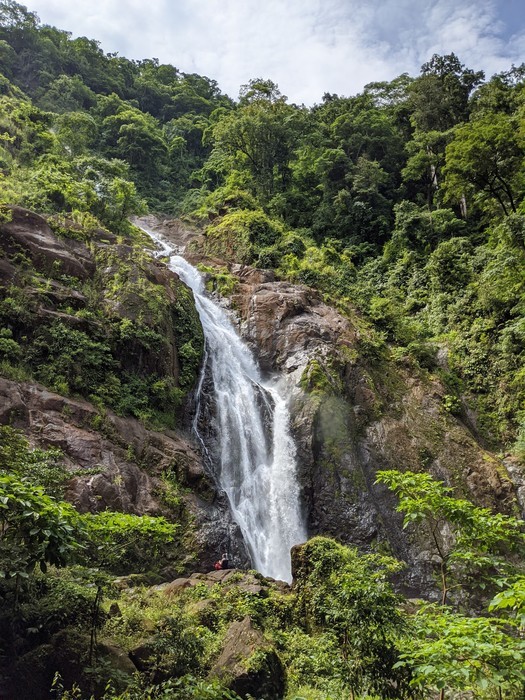
Bijagual Waterfall
If you want to go for a swim, you will have to walk about 300 meters (1,000 ft) more to reach the river. It’s a nice place to stay for a few hours and disconnect, so I recommend you bring everything you need with you. Freshwater pools are great for cooling down on the most humid days, so thank me later!
Now, if you’re staying in the town of Jacó, you can consider this tour, which visits the waterfall and natural pools and includes a horseback ride along the mountain trails.
Jaco Beach
Jacó Beach is one of the most popular beach destinations where you’ll find large stretches of sand, perfect waves, and lively nightlife. Thanks to its proximity to San José (you can get there in less than two hours by car), it is also frequented by locals, who decide to escape for the weekend to the beautiful Pacific beaches.
There are many things to do in Jacó, but most visitors come here for the relaxed atmosphere, fascinating sunsets, and wide variety of bars and clubs. In addition, it is one of the surfing towns par excellence where you can sign up for these classes and practice your skills. However, the sea currents can be quite strong here, so this isn’t the place to vacation with small children.
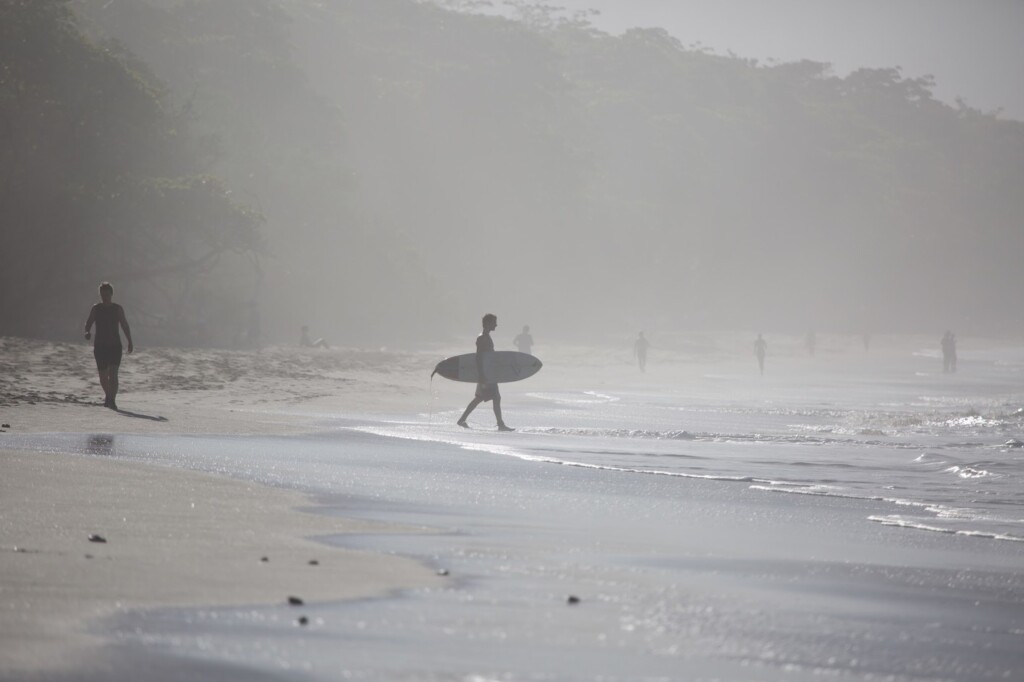
Jaco Beach
Among other popular excursions in Costa Rica, you can go horseback riding by the sea or explore the jungle on a quad bike. Jaco Beach is also a strategic point to visit other beaches such as Hermosa and Herradura.
Finally, if you want to travel cheaply, keep in mind that the Jacó area is home to some of the best hotels in Costa Rica, so you can plan a great vacation even on a tight budget.
Manuel Antonio National Park
Manuel Antonio National Park is another of the most important national parks in Costa Rica, which is why many travelers visit the Tárcoles River Crocodile Bridge on the way to this protected space. It is one of the most famous sites in the country, so you have probably already taken a look at it when organizing your itinerary.
You can enjoy all kinds of activities here, such as visiting the paradisiacal beaches, taking nature walks, and signing up for some animal-watching excursions.
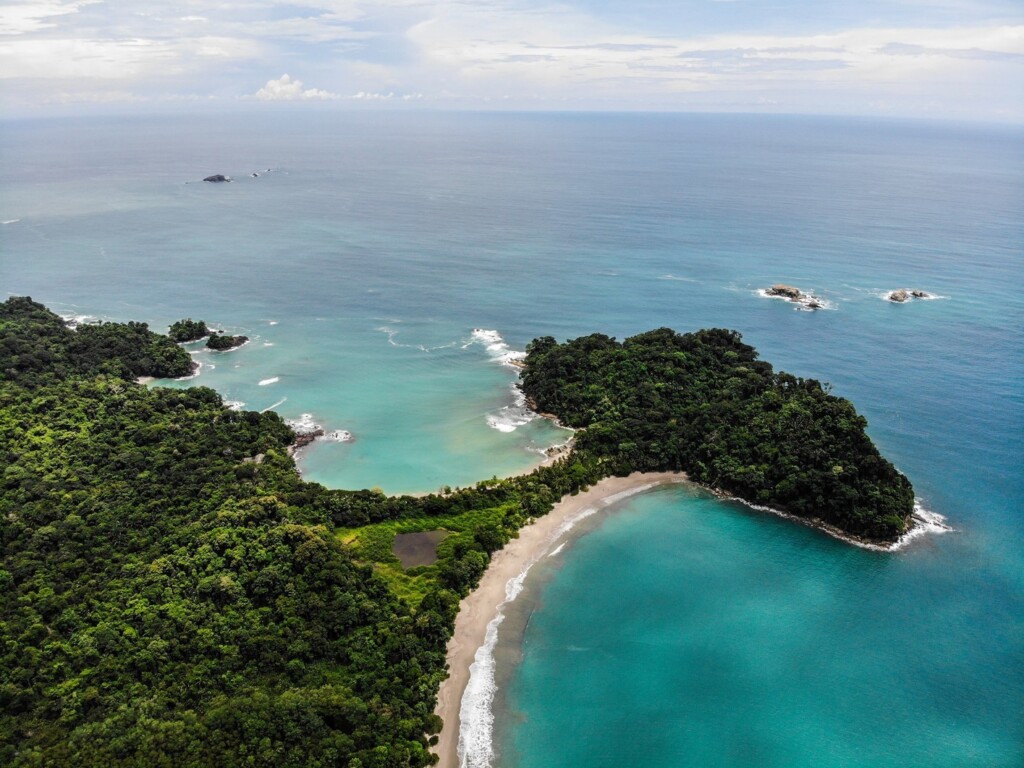
Manuel Antonio National Park
Playa Manuel Antonio and Playa Espadilla Sur are the two main beaches, so if you’re looking to spend some quiet time lying in the sun, I highly recommend them. However, in my opinion, it’s worth taking advantage of your visit to see the different species that live in this territory. This guided tour through the jungle allows you to observe monkeys, sloths, and birds in total freedom.
Furthermore, when night falls, the animals completely change their behavior, and you can see other species that don’t come out in the light of day. So, consider taking this night tour to explore another facet of this jungle.
On the other hand, Manuel Antonio is home to incredible marine fauna that is worth discovering, such as the humpback whales that we were able to spot during our catamaran ride. We also snorkeled among spectacular schools of colorful fish and other sea creatures.
And that’s all about the Tárcoles River Crocodile Bridge and the surrounding area. I hope this guide helps you plan your visit and you enjoy seeing the crocodiles in Costa Rica as much as we did.
If you have any questions or want to share your experience, feel free to leave me a comment below. I will be delighted to hear from you!
Pura Vida!
